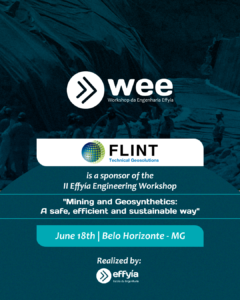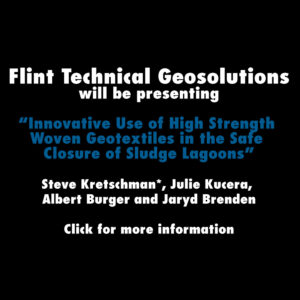February 15, 2018
The project involved the construction of a revetment in Ocean Isle Beach, North Carolina, USA, required to protect a home and associated infrastructure from erosion. The revetment consisted of installation of 2,317 TITANBags®, five feet wide and ranging in length from 10 to 15 feet.
The project consisted of the construction of a revetment in the town of Ocean Isle Beach, North Carolina, to protect a home and associated infrastructure from being lost due to erosion. Since conventional hardened structures, such as a seawall or sheetpile, could not be permitted by the state regulatory agency, the only viable solution that could be permitted was the use of a soft structure utilizing modular, hydraulically-filled sand containers with self-sealing fill ports proposed by the designer. The revetment consisted of installation of 2,317 TITANBags®, 5 feet wide and ranging in length from 10 feet to 15 feet. The geotextile fabric utilized for the TITANBags® featured an innovative rip-stop weave that prevents a damaged area of the fabric from spreading, as well as being of a sand color to blend in with the beach environment. The container fabric also permitted a higher than normal water flow rate permitting substantially faster filling times, thereby reducing installation duration.
Tubbs Inlet is subject to natural migration to the east and west in response to the geomorphology of the flood and ebb tidal deltas. Since a channel relocation in the 1960’s, a sand spit has been steadily enlarging and growing from the shoreline in Sunset Beach to the east, and toward the town of Ocean Isle Beach. This enlarging sand spit allowed the flood tide delta to build in a manner whereby tidal flows into and out of the tidal prism were directed
closer to the Ocean Isle Beach shoreline. As the area for tidal flow had narrowed, an increasingly deep tidal channel with high water velocities was formed, concentrated directly along the shoreline of the west end of Ocean Isle Beach, then about approximately 7 feet from homes, utilities and a street. The client requested an immediate solution for shoreline erosion protection to prevent the undercutting of a previously installed sand container revetment by
the east side of the rapidly migrating tidal channel, and to eliminate the risk of losing his home and critical infrastructure.
The specified erosion protection design was significantly different from that which is normally addressed with sand filled geotextile containers. With the deep tidal channel having migrated completely onto the shoreline of the property, and with water depths of the up to 22 feet immediately adjacent to the previously installed revetment, the design had to address extreme erosive forces that were ongoing daily.
Anticipated construction methods could not be pursued since no work area existed beyond the toe of the previously installed sand container revetment that had eroded away by the time construction could be initiated. Nearly the entire area beyond this revetment was now part of the deep tidal channel. This necessitated a significant alteration of the design and construction
methodology. An anti-scour apron had to be manufactured to larger than normal dimensions so that it could be carried beyond the bottom of the adjacent deep tidal channel. Methods for placement and securing the anti-scour apron at the bottom of the tidal channel had to be altered as well, enabling it to sink as designed and protect the sand container revetment from
being undercut by the tidal channel as it continued to migrate inland and deepen.
Integral to a successful sand container revetment is an understanding of how the revetment will shift when subjected to the ongoing erosive effects of
ocean waves and currents. The success of the revetment requires a design for the placement of properly sized sand containers in an arrangement that will resist random shifting of the containers within the revetment.
Several obstacles complicated the design and construction of the project. First, a permit by the state regulatory agency would only be issued if one could demonstrate that the property was under imminent threat, meaning that an erosion escarpment lies within 20 feet of the foundation of the structure to be protected. Secondly, state regulations only permitted sand container or sandbag structures of no more than 6 feet in height and a 20 ft. base width.
Eventually, a variance was issued permitting a base width of 58 feet and a not to-exceed height of 12 feet NAVD.
Additionally, this project required the integration of the sand container revetment with an existing stone revetment. The erosion protection needed to be continuous, requiring the sand containers at the end of the revetment to be placed immediately adjacent to the stone. The challenge was to find a solution where the sand container geotextile material would not be compromised by contact with the stone as ocean forces caused both the containers and the
stone to shift in place. This problem was addressed by the selection of a unique Flintex™composite fabric to function as a cushioning layer at the interface.
Once the sand container revetment was completed, sand was spread on
top of the structure to provide UV protection for the sand containers. Salt tolerant vegetation will be planted to stabilize this sand cover, encourage sand accretion and improve aesthetics of the site.
The design and construction of the TITANBag® revetment proved to be a huge success by sufficiently stopping the migration of an ocean inlet. Infrastructure, including structures, utilities and a road were protected and remain intact and functional. To our knowledge, this innovative technique had never before been attempted in such an extreme environment and should have broader applications as an alternative to stone jetties and groins.
When considering the eminent loss of the client’s home, as well as adjacent structures and infrastructure that were at risk of being lost due to erosion, savings as a result of this project are estimated in excess of $10 million.
IFAI Award link




